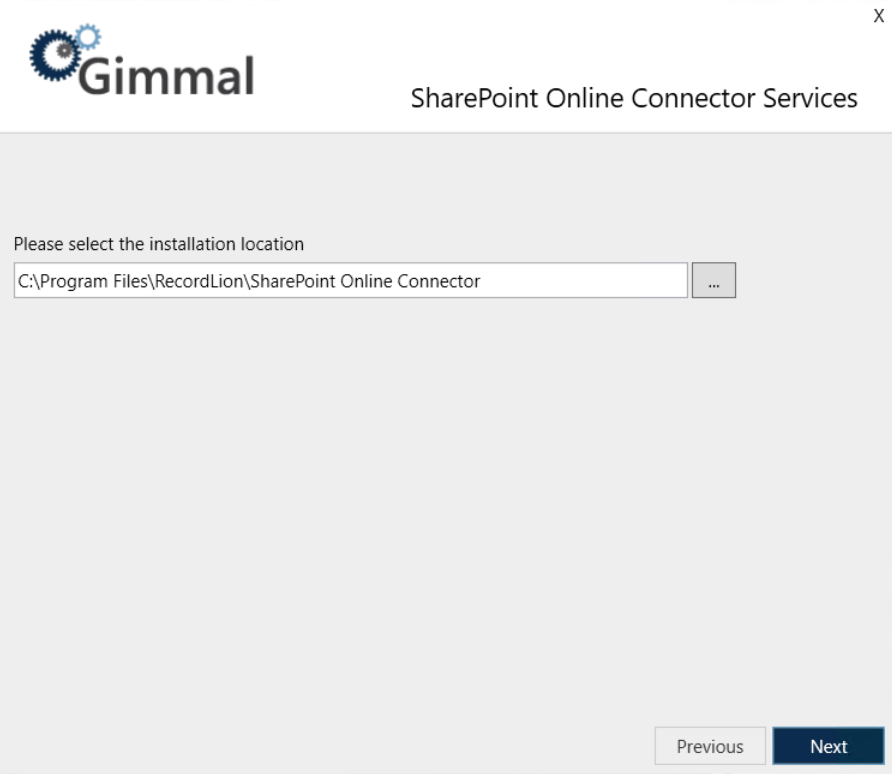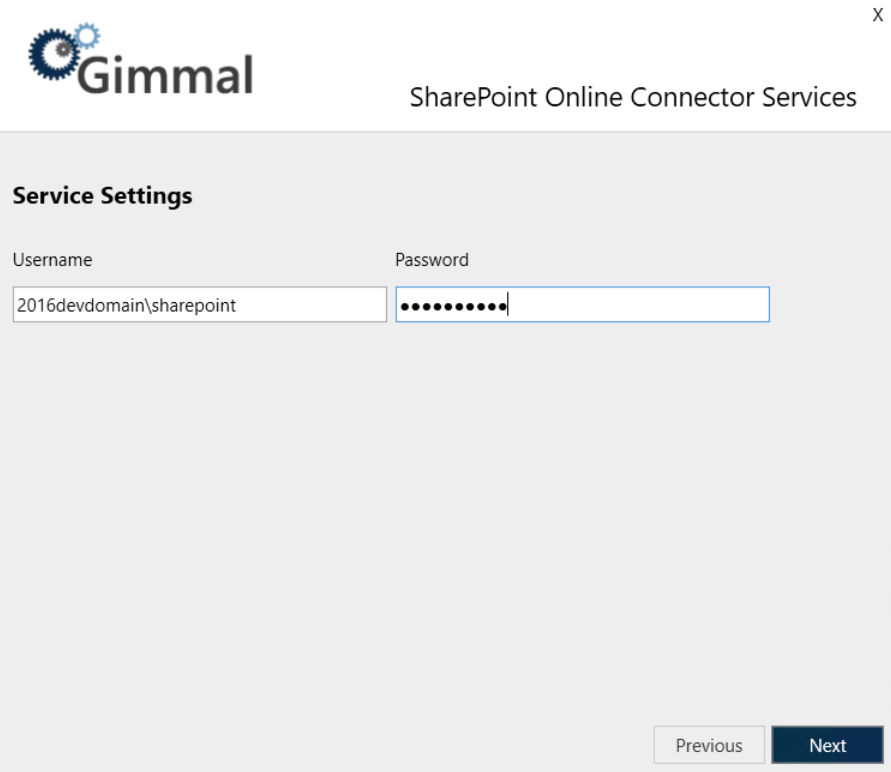Installing SharePoint Online Connector Services
The SharePoint Online Connector Services is a Windows Service that manages the lifecycle of files for any SharePoint Online Site that has been registered from the SharePoint Online Connector Web. Without this component, files contained within a Site cannot be managed by Records Management. To install SharePoint Online Connector Services, perform these steps:
On the SharePoint Online Connector installer, click Install to the right of the SharePoint Online Connector Services option. The first screen that displays is the Check for Prerequisites. This screen validates the following information before allowing the installation to proceed:
Click Next. The installation location screen displays, which determines where the connector will be installed.

Leave the installation path as the default, or to change it, click the ... icon next to the installation location field, select the desired installation location and then click Next. The Service Settings screen displays, where you will configure the settings for the SharePoint Online Connector Services.

When SharePoint Online Connector Services is installed, a Windows Service is created. The following settings specify which user account to use to execute this Windows Service.
Username (Ex. DOMAIN\Username)
Password
The user account should be a domain account and must have the following file system permissions, which are granted during installation:
Read/Write: %Install Path%\Logs
Click Next to continue to the Database Settings screen, where you will configure database settings for the SharePoint Online Connector Services.

Enter your settings based on the descriptions below. You should use the same options you used when configuring the SharePoint Online Connector Web
The following options determine the connection information that will be used by the SharePoint Online Connector to connect to SQL Server.
Database Server: The name of the SQL Server Install (ex. SERVERNAME\InstanceName)
Database Name: The name of the actual SQL Server Database
Use SQL Authentication: Specifies that the connection information should use SQL Authentication with the Username and Password indicated below
Username: The SQL Server username to use if SQL Authentication is specified
Password: The SQL Server password to use if SQL Authentication is specified
If SQL Authentication is not specified, the connection information will use Windows Authentication by specifying a trusted connection. This means that the Service account will be used to connect to SQL Server, therefore, this account will need the following database permissions. If SQL Authentication is specified, the SQL user will also require the following permissions.
db_datareader
db_datawriter
GRANT EXECUTE on all Stored Procedures
GRANT EXECUTE on all Scalar User Defined Functions
GRANT SELECT on all Table and Inline User Defined Functions
If Automatically Create Database is specified, the installation will automatically attempt to create the database using the Database Server and Database Name indicated. The appropriate account will also be automatically granted the appropriate rights to this database. This option requires that the current user has permission to create databases and manage security in the SQL Server instance indicated.
If Automatically Create Database is not specified, the installation will configure connection information but will not attempt to create the database. In this case, you will need to leverage the SQL Scripts at the following location (in the order listed) to manually create the database in the SQL Server instance indicated. You will also need to manually configure security as indicated above.
%Install Path%\Service\Sql\RecordLion.RecordsManager.SPOnline.sql
Click Next to go to the App Registration Settings screen, where you will enter the Client ID and Client Secret that were generated during App Registration.

Open the file where you saved the Client ID and Client Secret when you registered the SharePoint App and copy each value into the corresponding text fields.
Click Next. The Installation screen displays. The progress bar indicates the current state of the installation.
When the application finishes installing, click Next to continue to the Finish screen. This screen indicates that the application installed successfully.
Click Finish to close the installer screen.
